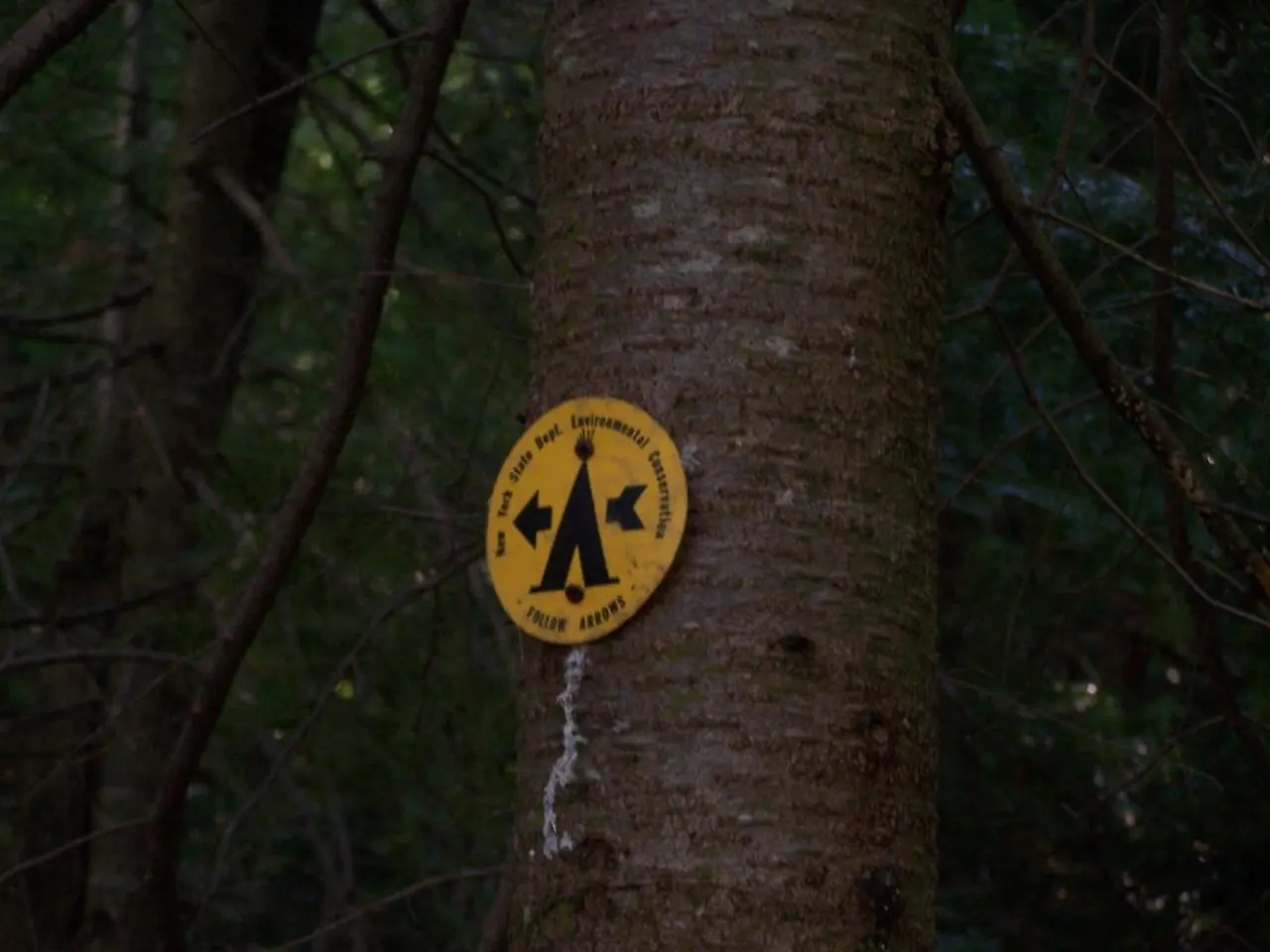Six tree species facing potential extinction
=====================================================================
Westonbirt, The National Arboretum, located in Gloucestershire, England, is a significant collection of trees that holds both national and international importance. This picturesque garden is home to many threatened tree species, making it a crucial hub for conservation efforts.
One such book that sheds light on these endangered tree species is "The Little Book of Disappearing Trees," authored by Dan Crowley. This comprehensive guide highlights 50 threatened tree species, many of which can be found at Westonbirt Arboretum.
The Atlas Cedar (Cedrus atlantica) is one such species suffering from pests, diseases, timber exploitation, and overgrazing. Many individuals are protected within National Parks and are being closely monitored for die-back. Another endangered species is the Star Magnolia (Magnolia stellata), native to Japan, which faces threats such as urbanisation and illegal collecting.
Sadly, more than one-third of the world's tree species are at risk of extinction. The Horse chestnut (Aesculus hippocastum) has declined significantly due to the leaf miner moth (Cameraria ohridella), while the Maidenhair tree (Ginkgo biloba) is under threat in the wild from habitat loss and timber exploitation.
The Giant Redwood (Sequoiadendron giganteum), an endangered species native to California, is the largest organism by volume. Threats include human exploitation and increased wildfire intensity due to climate change.
To combat these threats, gardeners and conservationists are adapting their practices to help threatened tree species survive climate change. Key adaptive practices include choosing native plants adapted to local climates, removing invasive species, supporting breeding and planting of climate-resilient tree varieties, using physical protection and microclimate modification techniques, engaging in reforestation and restoration projects, and landscaping that enhances ecosystem services.
Westonbirt Arboretum is at the forefront of these efforts. The co-author of "The Little Book of Disappearing Trees," Dan Crowley, emphasises the importance of growing threatened species in collections like Westonbirt for research, conservation, and wild re-introductions.
In addition, Westonbirt Arboretum is part of a project working to back-up all wild origin paperbark maple material currently held in UK tree collections. Over 100 species classified as threatened on the IUCN Red List of Threatened Species are cared for at Westonbirt.
For those interested in learning more about these threatened tree species, "The Little Book of Disappearing Trees" can be purchased during a visit to Westonbirt Arboretum. The Forestry England website also offers more information about the world's threatened trees. By supporting these efforts, we can help ensure the survival of these magnificent species for future generations.
[1] Source: Conservation and Management of Threatened Trees [2] Source: Breeding climate-resilient fruit trees [3] Source: Climate-smart horticulture: adapting to a changing world [4] Source: Reforestation and restoration for climate change mitigation and adaptation [5] Source: Ecosystem services and landscape design for climate change adaptation
- The landscape of Westonbirt, The National Arboretum, a significant collection of trees, hosts many threatened tree species, making it an essential hub for conservation efforts in environmental science.
- "The Little Book of Disappearing Trees," authored by Dan Crowley, is a comprehensive guide that highlights 50 endangered tree species, many of which can be found in gardens like Westonbirt.
- Climate change, pests, diseases, timber exploitation, and overgrazing are among the threats faced by the Atlas Cedar (Cedrus atlantica), another endangered species at risk in nature.
- The Horse chestnut (Aesculus hippocastum) and the Maidenhair tree (Ginkgo biloba) are among the numerous tree species that are at risk of extinction due to factors like the leaf miner moth and habitat loss, respectively.
- Adaptive practices in fitness-and-exercise, such as choosing native plants adapted to local climates, removing invasive species, supporting breeding and planting of climate-resilient tree varieties, using physical protection and microclimate modification techniques, and landscaping that enhances ecosystem services, can help threatened tree species weather climate change.
- In lifelong-learning and education-and-self-development, one can find resources about threatened tree species, like "The Little Book of Disappearing Trees," available for purchase during visits to Westonbirt Arboretum, and additional information from the Forestry England website.
- By supporting efforts like those at Westonbirt Arboretum that aim to conserve threatened tree species, we can contribute to a health-and-wellness lifestyle that ensures the survival of these magnificent species for future generations, fostering a positive home-and-garden and landscape for all.




